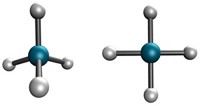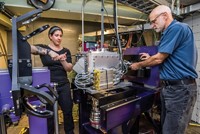Advertisement
Grab your lab coat. Let's get started
Welcome!
Welcome!
Create an account below to get 6 C&EN articles per month, receive newsletters and more - all free.
It seems this is your first time logging in online. Please enter the following information to continue.
As an ACS member you automatically get access to this site. All we need is few more details to create your reading experience.
Not you? Sign in with a different account.
Not you? Sign in with a different account.
ERROR 1
ERROR 1
ERROR 2
ERROR 2
ERROR 2
ERROR 2
ERROR 2
Password and Confirm password must match.
If you have an ACS member number, please enter it here so we can link this account to your membership. (optional)
ERROR 2
ACS values your privacy. By submitting your information, you are gaining access to C&EN and subscribing to our weekly newsletter. We use the information you provide to make your reading experience better, and we will never sell your data to third party members.
Physical Chemistry
Lawrencium Ionization Energy Measured
Actinides: Study confirms theoretical understanding of electronic structure of superheavy elements
by Jyllian Kemsley
April 9, 2015
| A version of this story appeared in
Volume 93, Issue 15

Researchers have for the first time measured the first ionization energy of lawrencium, the last of the actinides, validating predictions of the element’s electronic structure (Nature 2015, DOI: 10.1038/nature14342).
The first ionization energy is the energy required to remove one electron from a neutral atom in the gaseous state.
Compared with lighter members of the periodic table, the large nuclear charge for elements in rows six and seven causes their orbiting electrons to move faster. The speeding electrons generate relativistic effects that alter orbital energy levels.
Determining first ionization energies experimentally helps to ensure that researchers understand relativistic effects theoretically. Unfortunately, the superheavy elements with the greatest effects are also the most difficult to study because the elements can only be created through fusion reactions at heavy-ion accelerators and have short half-lives.
Lawrencium is now the heaviest element to have its first ionization energy determined experimentally. An international team led by Tetsuya K. Sato and Yuichiro Nagame of the Japan Atomic Energy Agency fired a 11B beam at a 249Cf target to produce 256Lr, which has a half-life of 27 seconds.
Sato, Nagame, and colleagues found that lawrencium’s first ionization energy is 4.96 eV, similar to those for group 1 of the periodic table. The predicted electronic configuration of Lr is [Rn]5f147s27p1/21 (the energies of p orbitals split from relativistic effects).
“This work represents a very important benchmark for testing theory predictions and validating computations for other atomic properties and other superheavy systems,” says Marianna Safronova, a physics professor at the University of Delaware.




Join the conversation
Contact the reporter
Submit a Letter to the Editor for publication
Engage with us on Twitter